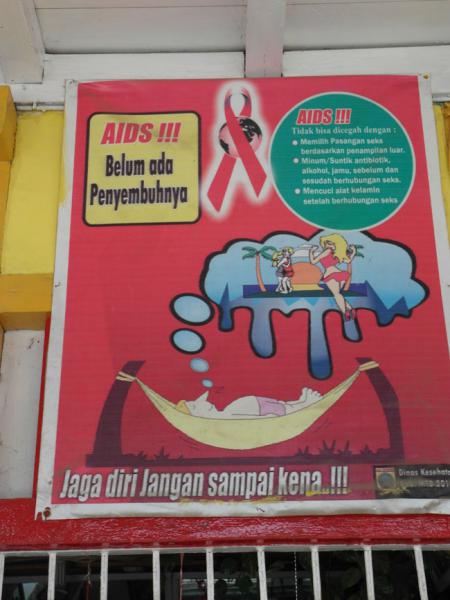Serendip is an independent site partnering with faculty at multiple colleges and universities around the world. Happy exploring!
Health Education

I don’t think of myself as somebody interested in advertising, but as I reflect on my growing fascination with health education, I realize that that is what it really is: lots of big and small advertising campaigns. People don’t just decide to use condoms, for instance, because someone tells them it will protect them from disease. They respond to marketing and campaigns that make them feel cool or manly or robust using condoms. You can see the same with messages telling people to quit smoking, use clean needles, or eat more vegetables. Much of public health work is a science, but health education is often an art. I think back, for instance, to the many health messaging campaigns I saw in Indonesia trying to tackle false health information, with the intent of influencing safer behavior. The poster below, for instance, explains that you cannot get HIV from choosing sex partners on the basis of their appearance; drinking or injecting antibiotics, alcohol, or herbal medicine before and after having sex; or washing one’s sex organs after having sex.

I am also fascinated by the idea of using media as a way to promote public health messages. I always try to think about the community empowerment model, which helps community members to educate one another and encourage each other to engage in healthier behaviors, when looking at different kind of health education. I think that media is so important because in today’s world almost everything is shared over social media, and facebook, youtube, and twitter are how people communicate with their social networks. Everything has changed from even five years ago. The organization I work for has worked with local high school students to make their own HIV-related PSAs, which I think stands as an example of how innovative health education can be. With mentorship and training from us, the participants created their own budgets, wrote scripts, cast parts, shot footage, and edited their own videos. The project helped to further the dialogue surrounding HIV both among the individual teenage participants and their larger communities – and the fact that it was user-generated content helped us target populations who needed to receive the messaging. There are so many people who currently have very limited access to comprehensive sexual education but can still log on to facebook and watch a video about HIV prevention and learn something. In my opinion, that is revolutionary.


Comments
Post new comment